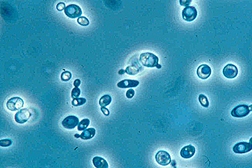Scientists with the USDA’s Agricultural Research Service in Peoria, Illinois have found naturally-grown yeasts that can produce molecules with surfactant properties. Surfactants are wetting agents that lower a liquid’s surface tension, used in a variety of consumer and industrial products, and normally derived from petroleum.
Surfactants work by enabling the cleaning solution to fully wet the surface being cleaned so that dirt can be readily loosened and removed. They then can clean greasy, oily, particulate-, protein-, and carbohydrate-based stains. Surfactants can also help remove dirt and in keep them emulsified, suspended, and dispersed so they don’t settle back onto the surface being cleaned.
ARS microbiologist Cletus Kurtzman and colleagues have since last year studied yeasts in the genus Starmella that produce sophorolipids, which are surfactant-like molecules. Their study comprises the largest survey yet of this kind of yeasts.
Kurtzman’s team used phylogenetics — hereditary molecular analysis — and mass-spectrometry to screen 19 of the 40 known Starmella yeasts for their ability to produce sophorolipids. The phylogenetics, in particular, enabled the team to determine which members produce sophorolipids based on shared gene sequences for the trait.
The analysis highlighted certain Candida species that were shown to be asexual members of the genus Starmerella. Previously, only a few Candida yeast species, such as C. bombicola and C. apicola, had been shown to make the sophorolipids.
The researchers took advantage of ARS’s Culture Collection — containing some 95,000 strains of actinomycetes, bacteria, molds, and yeasts — housed in Peoria to broaden the inquiry. The researchers cultured the yeasts with glucose and oleic acid. They then measured the yeasts’ sophorolipid production levels over a 24- to 168-hour period using mass-spectrometry analysis, which can identify compounds based on their unique molecular weights.
They found as expected, C. bombicola and C. apicola boasted the highest sophorolipid yields, but also turned up three other high-producing yeasts, including a new Candida species.
Read more: Genetic Modification Leads to Longer Tomato Shelf Life
* * *


 RSS - Posts
RSS - Posts
You must be logged in to post a comment.